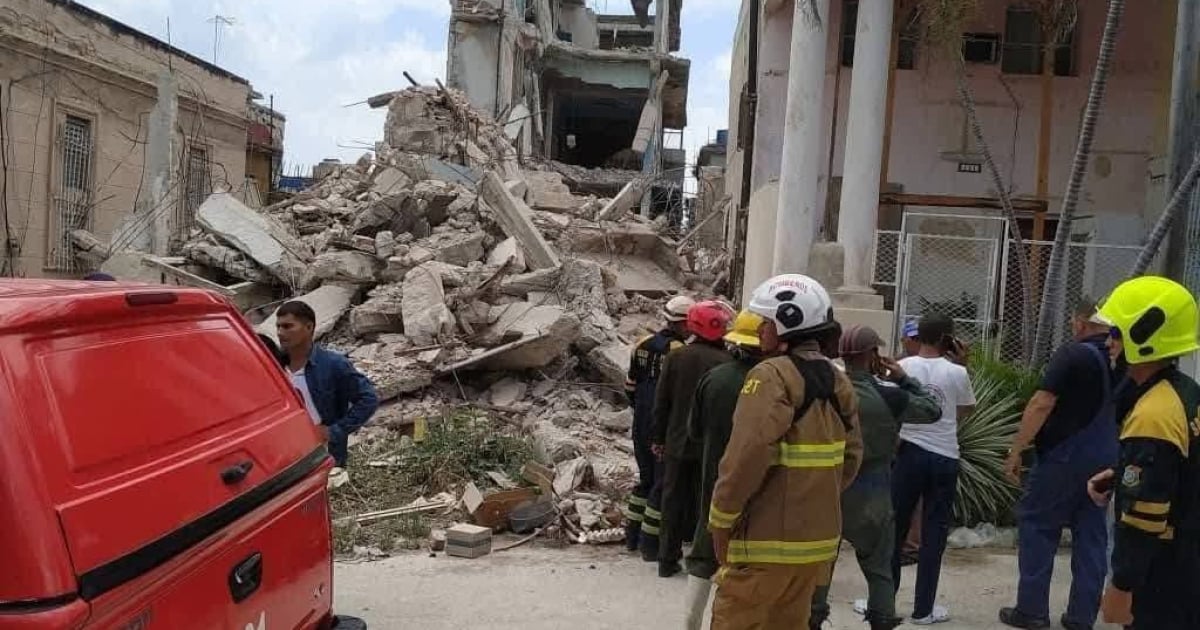This past Friday, a partial building collapse jolted the Santos Suárez neighborhood in the 10 de Octubre municipality, leaving a structure nearly reduced to rubble at the intersection of San Bernardino, Serrano, and Durege. As described by Facebook user La Tijera, the central portion of the building almost entirely crumbled.
The incident has heightened concerns among local residents who point to the visible deterioration of nearby structures. "They fear this won't be the last collapse in the area," the report highlights. Firefighters and rescue teams rushed to the scene to search for any residents who might be trapped. As of this report, it remains unclear if there were any casualties or individuals caught in the wreckage.
This event is not isolated in the area. A similar collapse occurred on the same block on February 16th, once again without an effective response from the authorities. "How many more lives need to be at risk before the regime takes action? This kind of tragedy is no longer news... it's routine," questioned the post's author.
Official media outlets have yet to release any statements regarding the incident, a common practice that reinforces the perception of institutional neglect amid this crisis.
The Stark Contrast: Hotels Rise as Homes Fall
This recent collapse once again underscores the alarming decay of Cuba's housing stock, particularly in Havana. Thousands of buildings in the capital suffer from severe structural damage, with many families living in constant fear of a sudden collapse.
The dire state of residential buildings starkly contrasts with the government's prioritization of hotel investments. While new tourist complexes are erected and colonial buildings are refurbished for foreign visitors, Cuban homes continue to deteriorate without any maintenance.
The growth of the tourism sector, driven by large-scale state projects, has not visibly benefited residents who continue to endure critical living conditions, lacking access to structural repairs, construction materials, and safe relocation options.
A Ticking Time Bomb for Most Cubans
Collapses like the one that occurred this Friday are not exceptions but symptoms of a longstanding structural crisis. Decades of neglect, resource shortages, governmental inattention, and failure to provide dignified housing solutions have turned many Cuban neighborhoods into ticking time bombs, where poverty and state abandonment often intertwine with tragedy.
Each new collapse leaves behind more than just debris; it destroys lives, displaces families, and further fractures communities. Rather than confronting the magnitude of the issue with a coherent and transparent plan, the state remains silent or offers inadequate assistance patches, insufficient to address a critical situation.
This latest collapse highlights not only the physical fragility of the buildings but also the fragility of a system that has ceased to protect its people.
Understanding Cuba's Housing Crisis
What caused the building collapse in Santos Suárez?
The collapse was a result of structural deterioration, a common issue due to the lack of maintenance and resources in Havana’s aging buildings.
Are building collapses common in Havana?
Yes, building collapses are frequent in Havana due to the widespread neglect and deteriorating housing conditions affecting many areas in the city.
What has been the government's response to these incidents?
The government has largely been silent or slow to respond, often providing minimal assistance, which has not been sufficient to address the dire housing conditions.
